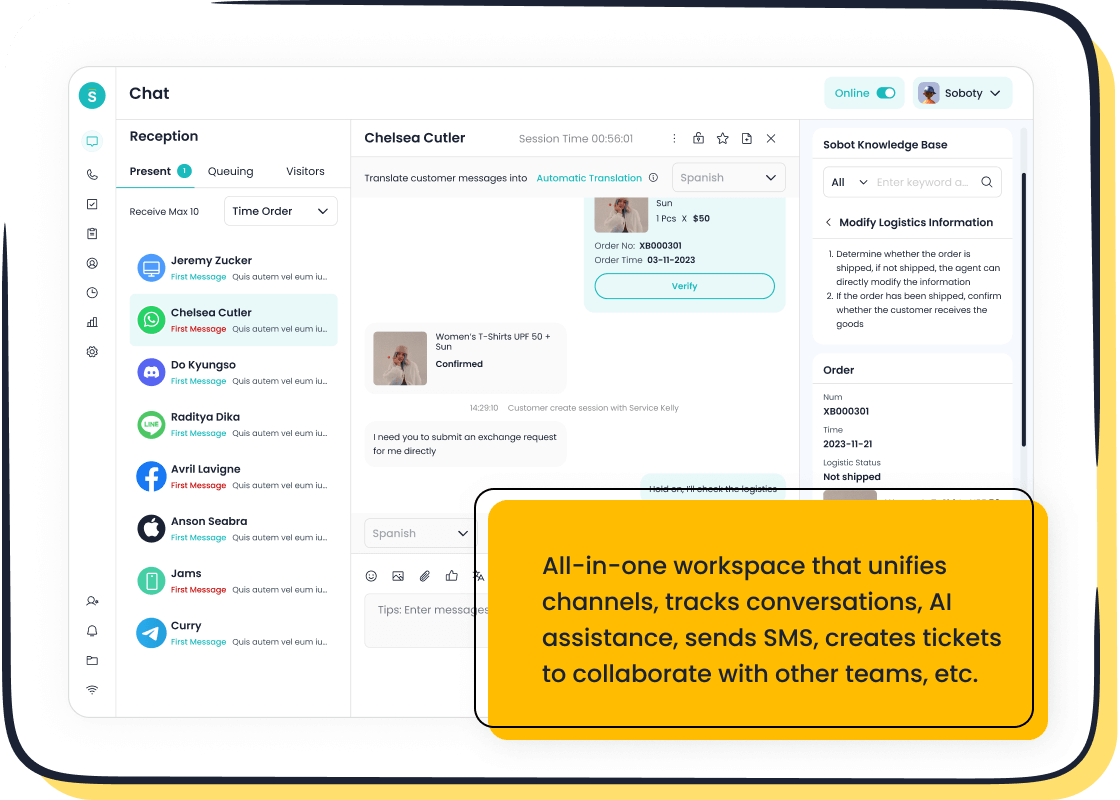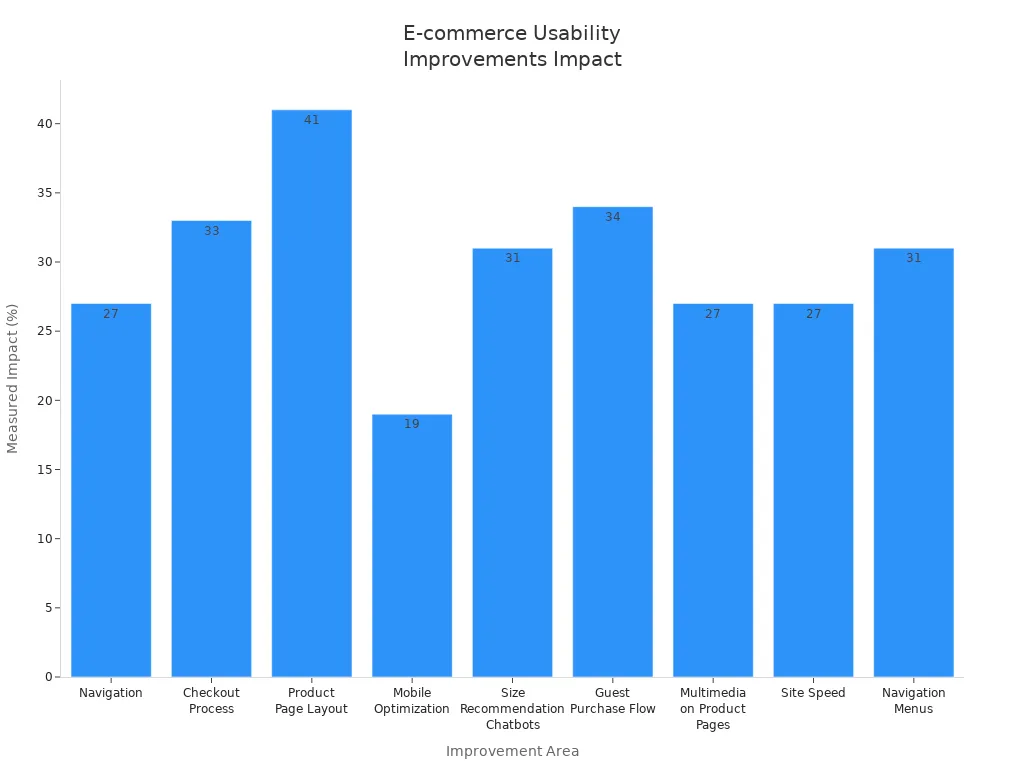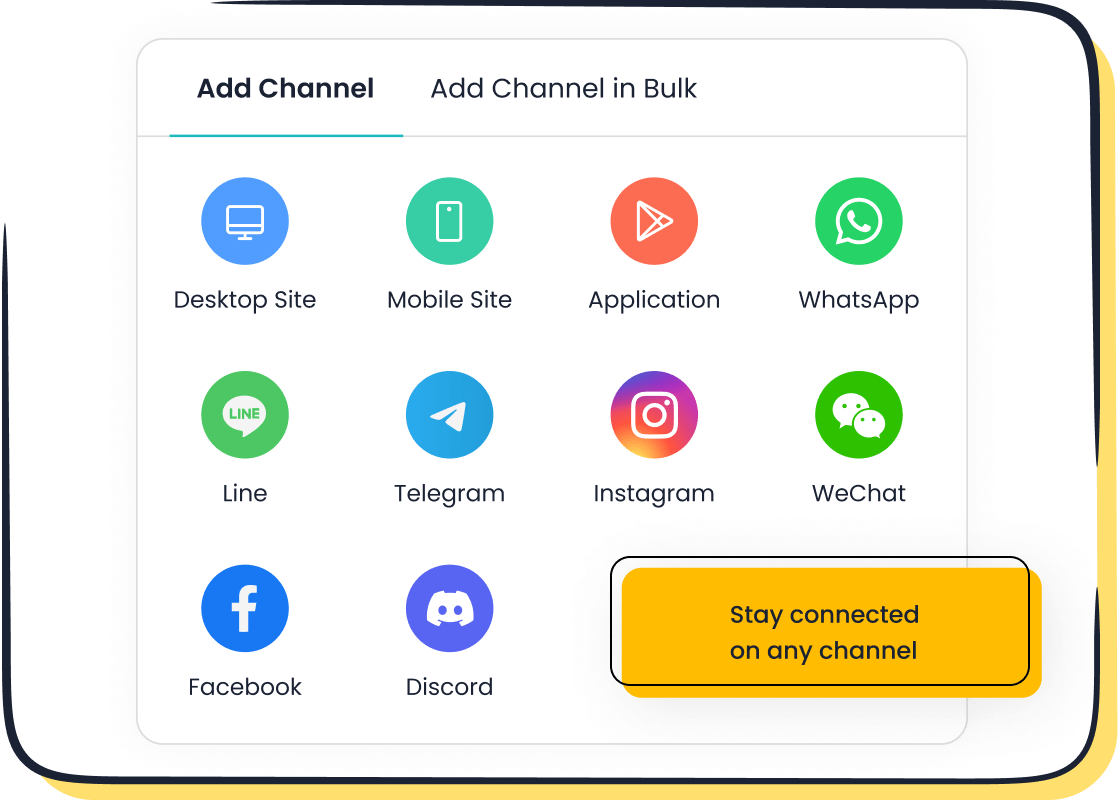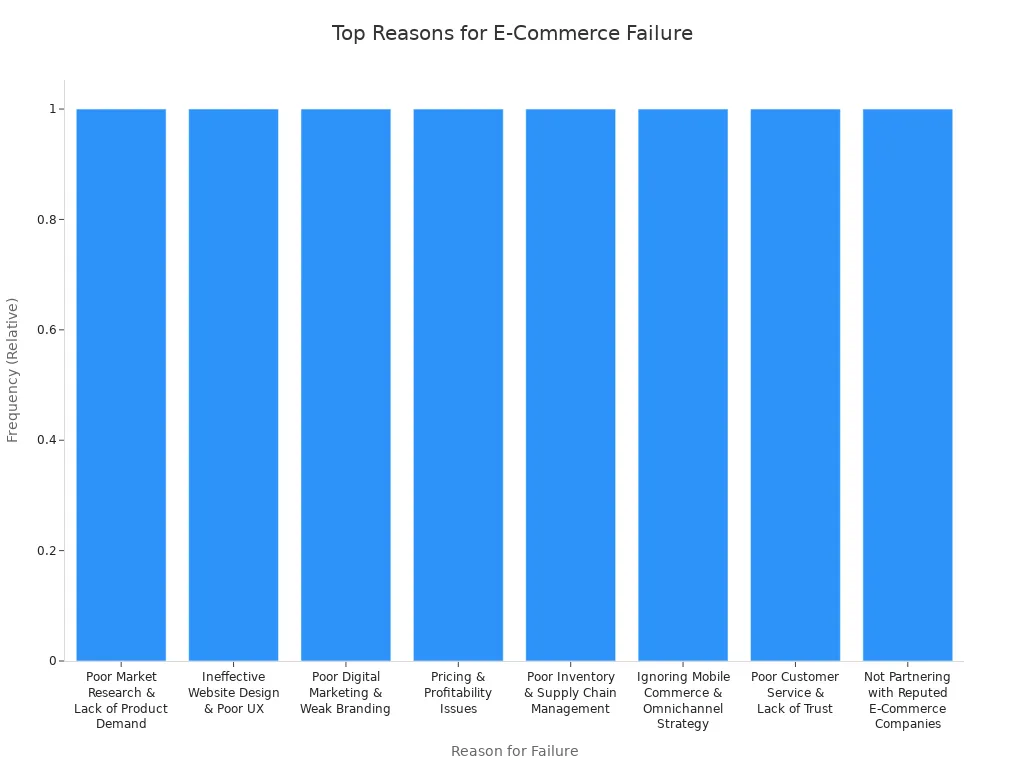E Commerce Experience vs Customer Experience for Online Success

The difference between what is e commerce experience and customer experience lies in their focus. E-commerce experience centers on the ease and efficiency of the shopping process, while customer experience covers every interaction a customer has with a brand. Shoppers often face frustrations such as slow delivery or forced account creation, yet a positive experience—like instant help from Sobot AI—can turn visitors into loyal customers.
| Aspect | Statistic / Insight |
|---|---|
| Cart abandonment rate | 69.99% |
| Chatbot response time | Within seconds |
| Customers switching after poor experience | Up to 89% |
Businesses that optimize both experiences see higher growth and loyalty. Sobot helps companies meet customer needs quickly, improving satisfaction and driving revenue.
What Is E Commerce Experience
Ecommerce User Experience
What is e commerce experience? This term describes the way users interact with an ecommerce site during the shopping process. It focuses on the transactional and usability aspects of online shopping. A strong ecommerce user experience helps customers find products, complete purchases, and receive support without frustration. Many shoppers leave a website if it loads slowly or if the navigation feels confusing. A well-designed ecommerce site uses clear menus, fast loading times, and mobile optimization to keep users engaged.
Ecommerce user experience also depends on how easy it is to search for products, view details, and check out. For example, a site with high-quality images and detailed descriptions helps users make better decisions. Real-time order tracking and a simple checkout process reduce friction and increase satisfaction. Sobot Live Chat improves ecommerce user experience by offering instant help across channels like websites, apps, and social media. With AI-powered tools, Sobot provides quick answers and personalized support, making the experience smoother for every customer.
A positive ecommerce user experience builds trust and encourages repeat visits. Companies that invest in usability see higher conversion rates and lower cart abandonment.
Key Elements
What is e commerce experience without its key elements? Several factors shape how users feel about an ecommerce website:
- Intuitive navigation menus that help users find products easily.
- High-quality product images and videos that show details clearly.
- Detailed product descriptions that answer common questions.
- Fast loading times to prevent users from leaving the site.
- Mobile responsiveness for a seamless experience on any device.
- Secure and simple checkout with multiple payment options.
- Personalized recommendations based on browsing history.
- Trust signals like clear return policies and customer reviews.
- 24/7 customer support through live chat or AI chatbots.
| Usability Challenge | Description |
|---|---|
| Website Performance & Usability | Slow load times, poor mobile optimization, and non-intuitive UX/UI design lead to high bounce rates and lost revenue. |
| Inventory Management | Stockouts and backorders cause dissatisfaction; real-time tracking and supplier coordination are needed to maintain availability. |
| Payment Systems | Complex payment options, transaction failures, and security concerns frustrate users and increase cart abandonment. |
| Checkout Process | Difficulties during checkout contribute to shopping cart abandonment. |
| Customer Service | Increasing demand for 24/7 support, personalized service, and use of AI/chatbots to improve responsiveness. |
| Cybersecurity & Payment Integration | Need for secure transactions and seamless integration of multiple payment methods to enhance trust and ease of use. |
Sobot Live Chat addresses many of these challenges. It supports omnichannel communication, allowing users to get help on their preferred platform. AI tools provide instant responses and multilingual support, making the ecommerce user experience more inclusive and efficient. Businesses using Sobot often see higher satisfaction and better conversion rates.
Customer Experience in E-Commerce
E-commerce Customer Experience
E-commerce customer experience shapes how people feel about a brand during every step of their online shopping. This experience covers all interactions, from seeing an ad to getting support after a purchase. In e-commerce, customer experience means more than just a smooth website. It includes how well a company connects with customers on websites, apps, and social media. Brands use customer experience management to track and improve every touchpoint. A seamless customer experience helps customers move easily between channels, making shopping simple and enjoyable.
E-commerce customer experience stands apart from traditional retail. Online, there is no face-to-face help. Instead, user experience depends on clear website design, fast support, and secure payments. Personalization plays a big role. Companies use data to offer product suggestions and special deals. Trust grows when brands provide clear return policies and fast answers to questions. Sobot’s omnichannel platform helps brands deliver consistent experiences across all channels. For example, OPPO used Sobot’s AI-powered tools to reach a 90% positive customer experience rate and reduce customer churn by 25%. These results show how strong customer engagement and smart technology can boost loyalty and satisfaction.
Customer Journey
The customer journey in e-commerce includes several stages. Each stage shapes the overall experience and customer engagement:
- Awareness: Customers first learn about a brand through ads or social media.
- Consideration: They compare products, read reviews, and look for details.
- Conversion: Customers decide to buy and complete the checkout process.
- Retention: After buying, they get support, updates, and loyalty offers.
- Advocacy: Happy customers share their experiences and recommend the brand.
Customer experience management focuses on making each stage smooth and personal. Sobot’s solutions help brands track the customer journey and respond quickly to needs. The Opay story shows this in action. By using Sobot’s omnichannel support, Opay raised customer satisfaction from 60% to 90% and increased conversion rates by 17%. These improvements came from better customer engagement and faster support. E-commerce customer experience grows stronger when brands use technology to connect with customers at every step of their journey.
E Commerce vs Customer Experience
Scope and Focus
Understanding the difference between e-commerce experience and customer experience helps businesses improve customer engagement and loyalty. These two concepts overlap but have unique roles in shaping how customers interact with brands.
| Aspect | E-commerce Experience (ECX) | Customer Experience (CX) |
|---|---|---|
| Scope | Focuses on the entire online shopping journey including website design, product offerings, checkout, shipping, returns, and post-purchase support. | Encompasses all interactions a customer has with a brand across multiple channels (digital and physical). |
| Focus | Creating a seamless, engaging, and personalized online shopping experience. | Building a cumulative relationship and emotional connection with the brand. |
| Goal | Drive satisfaction, loyalty, and repeat business through optimized online interactions. | Enhance overall customer satisfaction and emotional engagement across all touchpoints. |
| Relation to UX | ECX includes UX as a critical component focused on usability and functionality of ecommerce platforms. | CX includes UX as a subset but covers broader emotional and omnichannel experiences. |
E-commerce experience centers on the digital shopping journey. It covers tasks like browsing, searching, purchasing, and returns on ecommerce sites. User experience plays a big part here, making sure customers can find products and complete purchases easily. Customer experience, however, goes beyond the website. It includes every interaction a customer has with a brand, both online and offline. This includes social media, customer service calls, and even in-store visits.
Customer experience management takes a holistic approach. It looks at the full journey, not just single transactions. Businesses that focus only on ecommerce may miss chances to build deeper engagement and loyalty.
Sobot helps unify these experiences. Its omnichannel AI connects websites, apps, social media, email, and phone calls. This ensures customers get consistent support and information, no matter where they interact. Sobot’s scenario-based AI supports the entire purchase journey, from pre-sales questions to post-sales support. This approach boosts customer engagement and satisfaction across all touchpoints.
Impact on Loyalty
Customer engagement and loyalty depend on both e-commerce experience and customer experience. When businesses improve user experience on their ecommerce sites, customers find shopping easier and more enjoyable. This leads to higher satisfaction and more repeat purchases. For example, a mid-sized apparel retailer improved operational efficiency and customer satisfaction by streamlining their ecommerce processes. This led to better profitability and stronger engagement.
Customer experience has an even bigger impact on loyalty. A global retailer saw a drop in retention due to poor service quality. By upgrading technology and improving customer experience management, they regained loyalty and market share. Personalized engagement, such as loyalty programs and tailored recommendations, also increases retention. Edgard & Cooper, for instance, used a personalized loyalty program to boost average order value by 22% and retention by 38%. Reliable delivery and easy returns further build trust and encourage repeat purchases (source).
Empirical research shows that real-time, personalized communication—like live chat and omnichannel support—improves customer engagement and loyalty. Sobot’s AI-powered solutions enable instant, context-aware responses across channels. This helps businesses handle surges in inquiries, reduce repetitive tasks, and keep customers satisfied. Sobot’s platform supports dynamic pricing, inventory management, and personalized marketing, making it easier for businesses to meet customer needs and drive engagement.
Companies that use unified solutions like Sobot see up to 70% of routine queries handled by AI, a 40% reduction in costs, and a 43% ticket deflection rate. These improvements lead to higher customer engagement and loyalty.
Sobot’s flexible and scalable platform supports businesses of all sizes. By integrating customer experience management and ecommerce tools, Sobot helps brands deliver seamless, engaging experiences that drive loyalty and long-term growth.
Optimizing E-Commerce Customer Experience
Site Usability
A strong site and product experience forms the foundation of customer engagement. Customers expect a website to load quickly, display clear navigation, and offer a user-friendly search. When brands improve navigation with predictive search and visual filters, navigation efficiency rises by 27%. Simplified checkout processes, such as guest purchase and autofill, can lift checkout completions by 33%. Adding videos and images to product pages boosts add-to-cart rates by up to 27%. Mobile optimization remains essential, as smartphones account for most retail site visits. The chart below shows measurable improvements in usability after applying best practices:

Continuous optimization using analytics tools, like heatmaps and A/B testing, helps brands identify and fix usability issues. Sobot Live Chat supports these efforts by providing instant help and guiding customers through the site, improving user experience and engagement.
Personalization
Personalization shapes how customers interact with a site and increases engagement. Brands that use AI to recommend products and tailor content see up to a 63% increase in conversion rates. Personalized product recommendations can drive a 288% boost in conversions and contribute to 31% of e-commerce revenues. Customers feel valued when they receive personalized experiences, which leads to higher satisfaction and loyalty. Sobot’s omnichannel platform uses customer data to deliver targeted messages and offers, making each interaction more relevant. This approach reduces cart abandonment and raises average order value, supporting long-term customer engagement.
Customer Support
Customer support plays a vital role in the overall customer experience. Customers need help before, during, and after a purchase. Fast, reliable support builds trust and encourages repeat business. Omnichannel support, like that offered by Sobot, connects web, app, social media, and voice channels in one place. This ensures customers receive consistent service and never lose context. AI-powered live chat and chatbots handle routine questions, freeing agents to solve complex issues. Sobot’s tools also provide analytics to track satisfaction and improve service quality. Strong customer support increases engagement and helps brands meet customer needs at every stage.
Sobot Solutions for E-Commerce
Sobot offers powerful solutions that help e-commerce businesses solve common industry challenges. The platform uses advanced technology to improve customer support, streamline operations, and boost satisfaction. Many companies face issues like inventory management, dynamic pricing, and after-sales service. Sobot addresses these with AI-driven tools and seamless integration.
| Industry Challenge | Description / Impact | Sobot Solution / Feature |
|---|---|---|
| Inventory management and forecasting | Difficulty in predicting customer demand and stock levels | AI-driven demand forecasting to optimize inventory |
| Dynamic pricing | Need to adjust prices in real-time to maximize revenue | Real-time price adjustment tools |
| Customer behavior analysis | Understanding customer preferences and patterns | Data analytics and AI to analyze behavior and generate insights |
| After-sales service | Handling returns, repairs, and customer inquiries | Automated after-sales support including chatbots and AI agents |
| Omnichannel integration | Seamless experience across online and offline channels | Integration with platforms like Amazon, Walmart, Shopify; unified customer interaction |
| Personalized marketing | Targeted promotions and recommendations | AI-powered personalized recommendations and proactive marketing via multiple channels |
| Seamless customer support | Quick, 24/7 response to inquiries and problem resolution | AI chatbots, voicebots, AI agents with NLP and human agent collaboration |
| Automated warehousing and logistics | Optimizing warehouse and delivery efficiency | AI-driven logistics optimization and automated warehousing |
| Loss prevention and security management | Preventing product loss and monitoring in-store behavior | Security management tools integrated with AI monitoring |

Live Chat Benefits
Sobot Live Chat brings many benefits to e-commerce businesses and their customers:
- Customers get instant answers to questions, which reduces wait times and improves satisfaction.
- The chat operates 24/7, so support is always available, even outside business hours.
- AI-powered chatbots help with product searches, price comparisons, and booking appointments.
- Real-time notifications about stock and price changes keep customers informed and engaged.
- Live chat collects feedback and customer data, which helps businesses improve products and services.
- The system scales easily, handling many conversations at once without extra cost.
- By automating routine tasks, Sobot Live Chat lets human agents focus on complex customer needs.
For example, Opay used Sobot’s omnichannel solution to manage customer inquiries across social media, email, and voice. This led to a jump in customer satisfaction from 60% to 90% and a 17% increase in conversion rates.
Sobot Live Chat helps businesses build trust, boost sales, and create loyal customers by making support fast and personal.
Omnichannel Support
Omnichannel support means customers can reach a business through any channel—website, app, social media, or phone—and get the same high-quality service. Sobot’s platform unifies all these channels, so every customer interaction is tracked and managed in one place. This approach creates a seamless experience and makes customers feel valued.
Research shows that companies with strong omnichannel strategies keep 89% of their customers, compared to only 33% for those with weak strategies (source). Sobot’s omnichannel support allows businesses to collect feedback, analyze customer behavior, and offer personalized recommendations. This leads to higher engagement, better retention, and long-term loyalty.
Sobot’s integration with platforms like Amazon and Shopify ensures that e-commerce businesses can serve customers wherever they shop. By connecting every touchpoint, Sobot helps brands deliver consistent, personalized service that meets modern customer expectations.
User experience focuses on site usability, while customer experience covers every touchpoint, from browsing to post-purchase support. Businesses that optimize both see higher conversion rates, loyalty, and predictable growth. Industry leaders like Amazon use personalization and analytics to drive results. Sobot’s omnichannel tools help brands automate support and improve satisfaction. Owners should review their processes, listen to feedback, and test improvements. Next steps include exploring Sobot Live Chat for seamless integration and data-driven insights.

FAQ
What is the main difference between e commerce experience and customer experience?
E commerce experience focuses on the online shopping process, like website navigation and checkout. Customer experience covers every interaction with a brand, including support and after-sales service. Both are important for building loyalty and driving business growth.
How does Sobot improve e commerce experience for online stores?
Sobot provides live chat and omnichannel support. These tools help customers get instant answers on websites, apps, and social media. Businesses using Sobot see up to a 38% increase in conversion rates and higher customer satisfaction.
Why is customer experience important for e-commerce success?
Customer experience affects how shoppers feel about a brand. Positive experiences lead to repeat purchases and referrals. Research shows that 89% of customers switch to competitors after a poor experience (source).
Can e commerce experience and customer experience be optimized together?
Yes. Businesses can use analytics, personalization, and unified support to improve both. Sobot’s platform helps brands track every touchpoint, making it easier to deliver seamless e commerce experience and customer experience across all channels.
What features should businesses look for to enhance e commerce experience and customer experience?
Key features include fast-loading websites, mobile optimization, secure payments, and 24/7 support. Sobot offers AI-powered chatbots, live chat, and integration with platforms like Shopify and Amazon. These tools help businesses create a strong e commerce experience and customer experience.
See Also
Ways Chatbots Enhance Customer Experience In Online Shopping
Increasing Online Sales Through Ecommerce Live Chat Tools
Best Live Chat Solutions For Ecommerce Businesses In 2024
